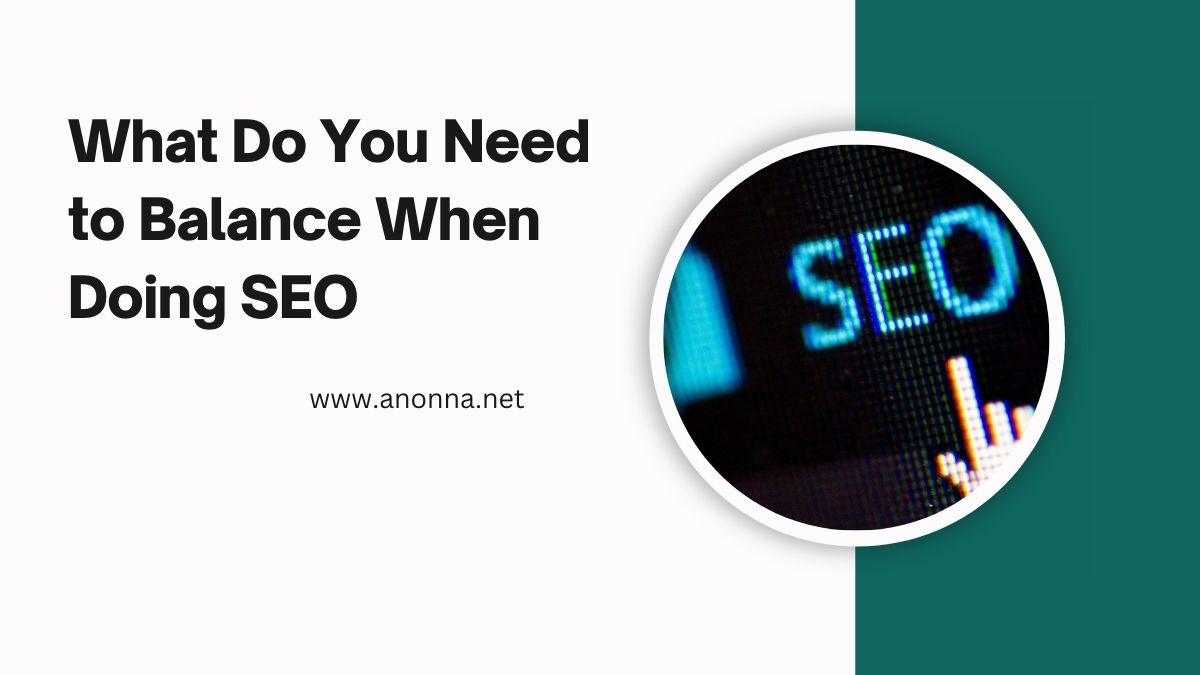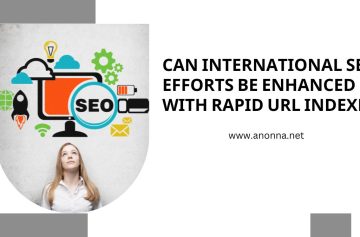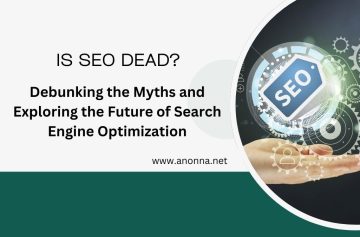
What Do You Need to Balance When Doing SEO? Key Factors for Successful Search Engine Optimization
Breaking down the basics of SEO
On-Page versus Off-Page SEO
There are two fundamental components of any successful SEO strategy: on-page SEO and off-page SEO.
On-Page SEO includes all the steps you can take literally on your own website to rank for the search terms you are interested in. This also includes doing keyword research and optimizing your content with relevant keywords, writing an appropriate title tag and meta description, and creating internal linking for a logical site structure, as well as ensuring the content as a whole is of high quality and matches user intent.
Only Visit Your Site In Off-Page SEO Well-known off-page SEO techniques include creating high-quality links from reputable sites, using social signals (likes, shares, and social media mentions), and managing brand mentions on the Internet.
On-page and off-page SEO are equally important for the overall performance of your site’s ranking. Whereas on-page SEO focuses on optimizing your content for search engines and users, off-page SEO helps establish your website’s credibility and relevance. On-page SEO optimizes the quality of the site while off-page SEO increases the visibility and authority of the site, so balancing the two maintains a holistic strategy.
The Technical Side of SEO
Technical SEO is the foundation on which a site’s ability to rank on search engines is built. It is not immediately evident to the users, yet it performs an essential role in manipulating your website to be easily crawled and indexed by search engines. Technical SEO consists of the following key elements:
It helps you with technical SEO for optimizing on-page content, metadata, and site speed. Websites that load quickly provide a better experience for users, and so Google prioritizes them.
Mobile-Friendly: Due to the increase in mobile search, Google applies mobile-first indexing, which means that the mobile version of a website is the primary version for its ranking and indexing. To maximize user experience, make certain your site is mobile-friendly and easy to navigate.
Crawlability — This means that search engines should crawl and index your site’s pages efficiently. A clear site architecture and a properly optimized XML sitemap will allow search engines to find and index your pages correctly.
Structured Data & HTTPS: Structured data helps to understand pages better, which will increase the chances of creating rich snippets. A secure site has been another metric to help boost rankings and further improve trust for users and search engines.
It is easy to get bogged down with technical SEO; just remember to keep certain elements that impact user experience and the likelihood of indexing in mind first — for example, site speed and mobile-first. Yet these technical improvements are never realized in a vacuum: they must work in harmony with both on-page and off-page strategies to ensure your SEO efforts are genuine and achievable.
Create High-Quality Content to Engage Users
The key component of any successful SEO strategy is quality content. The relevant, informative, and practical content attracts the users, but they also spend more time on your website and increase the dwell time and lower the bounce rate. Search engines like Google take user experience very seriously, so you must ensure your content fulfills user intent and offers genuine value.
Make Content That Adds Value: Always begin with mapping out requirements and pain points of users. Create content that provides solutions, insights, and answers to their queries. No matter if it’s blog entries, how-to guides, or case studies, your content is valued as long as it touches on education and valuable takeaways.
User Intent Matters: When writing content, user intent matters. Is the user searching for information (informational intent), or are they ready for purchase (transactional intent)? Aligning your content to the query intent — meeting the needs of your audience at multiple stages of the search funnel — can increase the engagement and SEO success of your content.
Considerations on Keyword Usage in Content Strategy
Keywords remain a crucial component in ensuring your content pops up sooner on search engines results pages (SERPs) as content quality is as important as its relevance. But striking the right balance between the two is very important to ensure your content is still legible.
Step 1: Keyword Research and Selection. Leverage tools such as Google Keyword Planner, SEMrush, or Ahrefs to identify high-traffic, low-competition keywords that align with your content goals. This helps you choose the ones relevant to your content as well as those with the right search volume and competition.
Find the Right Balance on Keywords: After you have chosen your target keywords, make sure you use them strategically in your content. But stay away from keyword stuffing — repeating keywords so often in the text that it begins to sound unnatural or forced. Stuffing again, can incur the wrath of the search engine, not to mention the user experience. Keywords should be integrated naturally, rather than awkwardly tangent.
Keyword Integration: It’s important to integrate keywords in a way that feels organic. Make sure to put them in important places like the title of the page, the headings, first paragraph, and the last. With this, it also helps keep a natural flow while increasing the combination of the term with the use of synonyms and related terms. Also make use of tools like LSI (Latent Semantic Indexing) Keywords to find terms that can be added to your content to make it more relevant to your search without extensively relying on the primary keyword.
When you find that balance between high-quality content and strategic keyword optimization, you can create content that not only does well in terms of ranking but also engages and fulfills your audience’s needs.
UX vs. SEO Performance
Query: Professional Website Usability and Navigation
There is a symmetrical relation between UX, SEO performance with a Website usability and Navigation that directly affects these factors. An easy-to-navigate and well-designed website keeps visitors on your website by encouraging them to visit more pages, which will enhance engagement metrics like dwell time and bounce rate—the two are search engine ranking factors and indicate how relevant your content is.
How Website Design Affects UX: Simple, easy-to-use design helps users find what they’re searching for, which means they’re more likely to remain on your site for an extended period of time. Simple homepages, clear calls-to-action, and easy-to-follow categories; great design means easy navigation and less frustration.
Easy Navigation’s Contribution to Engagement Metrics: Users tend to engage more with a website when they find it easy to navigate. That means fewer bounce rates (less leaving the page) and lengthy dwell times (the time spent on the page). Both work to signal to search engines that your site has relevant and useful content, which may improve its rankings.
SEO That Does Not Compromise UX
SEO optimization for your website is needed, but you should avoid sacrificing user experience in doing so. When done right, SEO best practices and UX principles can be complementary to one another, providing users with a smooth experience that is also visible to search engines.
Balancing UX (User Experience) and SEO (Search Engine Optimization)
SEO is about feeding the search engines, whereas UX is about making it user-friendly. This directs both goals when you focus to make the site easy to navigate, engaging, and quick. For example, you may create clear headings, use alt text for images, and use SEO-friendly URLs to help search engines better identify your site content, but this will also excite the user when they come and go through the user experience.
Responsive design, fast-loading pages, and mobile optimization
One of the most important aspects of SEO and UX is that your website functions properly across any device. Second reason that the layout should be highly responsive, so the mobile user experience will enhance. Moreover, they can suffer from pages that load slowly, which is bad for a great experience but also for SEO. Google favors fast-loading sites, particularly on mobile devices, as page speed is a ranking factor in its algorithms. Mobile optimization is critical for this reason as well — mobile search is becoming ever more prevalent. Non-responsive websites won’t fare well in search results.
Finding a balance between UX design and SEO performance is the key to creating a successful website that can win over both users and search engines. In the end, the main takeaway is to make sure that SEO and UX are not competing but complementing each other so that performance and engagement increase and rankings improve.
Striking a Balance Between Short- and Long-term SEO Strategies
Short-Term vs Long-Term SEO Goals
A key part of creating an SEO strategy is to distinguish between immediate and longer-term goals. In a well-rounded SEO strategy, both have a role, but achieving the right balance is vital for sustainable growth and success.
Immediate Benefits (site traffic, keyword rankings)
Short-term SEO tactics are mostly concerned with short wins—an increase in traffic and keyword ranking; For example, this can include optimizing existing content, targeting long-tail keywords or resolving technical issues that enhance site speed and usability. Short-term splashes often yield visible results within a few weeks and help websites in getting temporary visibility and traffic.
Long-Term Strategies (Brand Authority, Quality Backlinks)
In contrast, long-term SEO is about building strong foundations for enduring success. That includes acquiring quality backlinks, building brand authority, creating in-depth, valuable content, and improving user experience over time. These strategies don’t deliver quick wins which are visible and results remain for a longer period of time thus providing organic traffic, and search ranking for a more extended period of time hence making it worthwhile.
While an understanding that quick wins will likely only draft a small amount of traffic and won’t have lasting value in the absence of sustained investment to maintain ranking. Sustainable tactics like regular content creation and link-building will take more time to deliver results, but they are what ultimately builds a site’s authority and forges its reliable, organic growth.
Be Consistent But Not Over-Optimized
Consistency must be maintained, while you should avoid over-optimization at all costs and focus on long-term SEO success!
Risk for Over-Optimizing Content/ Low-Quality Backlinking
Over-optimization occurs when websites become overly obsessed with targeting shadow keywords or employ tactics like adding large blocks of keywords into their content. Likewise, the creation of various low-quality backlinks can be accompanied by Google penalties that affect the reputation and performance of your site. Although we do want to optimize our writings for search engines, we also want to keep them reasonable and a benefit for your users.
Finding the Harmony of Optimization Without Luring Punishments or the Law of Diminishing Returns
Effective SEO is a fine balance of optimization vs navigation and high-quality pages. Thus, instead of stuffing content with a ton of keywords, create content pieces that add value and interest, where relevant terminologies emerge naturally. Likewise, when creating backlinks, make quality your priority over quantity, making sure you’re acquiring links from authoritative and related sources. Also, don’t try to game search-engine algorithms — Google’s algorithms are built to reward authenticity and valuable content.
By balancing these short-term victories with a long-term strategy and keeping things consistent — and with a user-first mentality — you can make sure your SEO efforts turn into long-term results. Pursuing the wrong shortcuts can kill your efforts, but if you tend the garden well with tactics designed for performance and longevity (consistency), then you’ll not just succeed, you’ll thrive.
Tracking and Fine-Tuning the SEO Efforts
Tracking SEO Performance
So, to make sure your work pays off, it’s important to monitor performance indicators that demonstrate the success of your SEO work. These metrics offer insights on how well your website is doing and where there is room for improvement.
Key Metrics to Track:
- Rankings: Track keyword rankings for what terms are driving the most traffic to your site. Keeping an eye on this regularly will help you figure out if your optimization efforts are effective.
- Traffic: This statistic will help identify your visitors, and it also is important to analyze how visitors land on your business page. Look for trends in organic search traffic, referral traffic, and direct visits.
- Bounce rate: A high bounce rate may imply content that is misleading or lackluster to a user. By monitoring this metric, you can keep improving content and making sure it’s still in line with user intent.
How You Measure the Success of SEO Using the Tools:
Google Analytics
This tool allows you to track everything from website traffic to user behavior and conversions. It also gives you a broader picture of how your SEO efforts play a role in overall site success.
Google Search Console
An absolute must-have tool of any SEO strategist, Search Console helps you track your website’s search performance, search queries, and all the indexation issues. It’s an essential resource for monitoring where you stand in search results while troubleshooting any potential technical SEO problems.
Keeping up with SEO changes and algorithm updates
SEO is not a one-and-done practice — search engines such as Google are continuously updating their algorithms for a better search experience. Keeping up to date with these changes and adjusting your strategy appropriately is essential in order to keep and build your ranking.
Keeping Abreast of Algorithm Updates:
Google and other search engines regularly deploy updates that can influence search rankings. Monitoring these changes — core updates or algorithm tweaks (e.g. BERT, RankBrain) — will help you assess their impact on your website performance.
Staying Up to date with SEO Changes:
Follow trustworthy search engine optimization blogs, online forums, as well as news resources to keep on top of the latest updates.
Adapting Strategies to Align With Changing SEO Best Practices:
SEO best practices can change dramatically depending on algorithms released by search engines. If one of the updates is for instance to put more emphasis on user experience (which it always is), you should focus even more on things like page load speed, responsiveness, and engagement metrics. Adjust your SEO strategy so it centers around the factors relevant to the current algorithm’s priorities.
Content Relevance:
It is essential to keep your content relevant and valuable to your audience.
Technical SEO:
Optimize the technical components of your website (including website speed, mobile optimization, and structured data) to meet new standards.
Backlink Approach:
Keep your nose to the grindstone on link-building best practices, analyzing that your backlinks are high quality and from astute sources.
This allows you to make adjustments to your strategies, respond to new challenges, and stay ahead in search rankings by constantly monitoring your SEO performance and remaining updated on algorithmic changes.
Conclusion
Hence, for a long-term sustainable success, you have to make sure you balance all aspects of SEO like content quality, keyword optimization, and technical SEO or user experience. All three are important for generating organic traffic, gaining higher search positions and providing a smooth web browsing experience.
Finding Harmony Among Important SEO Aspects:
Concentrating on quality ensures your website does more than just attract visitors; it also gives them real value, and keyword optimization helps people find your content. As a technical SEO it works on its part for the performance and for better in crawler acquisition, UX in general on its part contributes for the retention and user engagement in a broader context.
Achieving long term and sustainable SEO success:
As mentioned earlier, a multifaceted SEO strategy can ensure that your website maintains and increases visibility. A strategy that balances all aspects of SEO rather than focusing on one to the exclusion of the others is more robust and better able to adapt to changes. This balance not only aids in ranking enhancement but also acts as a safeguard for your site against future algorithm updates.
You are constantly adjusting for SEO:
SEO is not a spec that you can write once and forget. With continuous monitoring of metrics, staying current with evolution changes, and adapting your strategy, you can continue to thrive. SEO is a long-term game, and balance and adaptability will provide the best results over time.
You can also sustain your growth, boost your presence through higher results, and ensure your search engine and user side’s balance through regular testing and adjustments.
You can see more articles from here.








Add comment